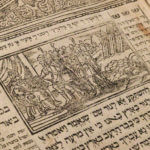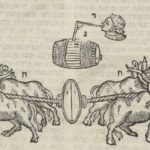Yishaq Lamponti, Pachaq Yishchhaq, dictionary of Jewish law, the first volumes printed in Venice in 1750 and completed in Berlin in 1888.
The printing of the first three of the thirteen volumes in folio can be considered “the swan song of Hebrew publishing” in Venice.
Yishaq Lampxonti (Ferrara 1679-1756) was a respected scholar and physician. After earning his medical degree in Padua in 1696, lived in his hometown practicing medicine; in 1743 he became president of the Rabbinical Academy.
The printing license from the Cattaveri is placed on the first volume in 1749. The title reads: Ritual Dictionary of the Hebrew Language. This work was highly appreciated for the scientific method applied to the rules of Talmudic law and to the related jurisprudence.
It is organized by topics and in alphabetical order. Much space is devoted to the discussion, as indicated in the responses by contemporary Italian rabbis to the author. On some subjects it presents an impressive array of sources, from late antiquity halakhic literature, to the most recent teshuvot that Lampronti possessed, some times in manuscript form.
For its intellectual breadth and encyclopedic approach this work is unparalleled in Jewish literature. However, a possible precedent could be found in the alphabetical collection of Talmudic topics of a two volumes collection entitled Petah ha-ohel, compiled by Abraham ben Yehuda Löb of Przemysl and printed in Sulzbach in 1691.
The autograph manuscript, consisting of 120 volumes, full of additions and letters by rabbinical authorities, was purchased in 1845 by Louis Philippe, king of France, and deposited in the Bibliotheque Nationale. The first volume, devoted to topics beginning with the alef-bet letters, was printed in Venice in 1750 —the author was in his seventies— at the Stamparia Bragadina of Isaac Foa and Shelomoh ben Mosheh Dawid Ashkenazi. The Rabbane u-ge’one of the Italian community and Eretz-Israel: Venice, Livorno, Ancona, Mantova, Modena, Turin, Florence, Reggio Emilia, Verona, Padua, Casale Monferrato, Alessandria della Paglia, Pesaro, Finale Emilia, Fano, Lugo, Rovigo, Casale, Livorno, Hebron and Jerusalem, were responsible for granting the haskamah (authorization).
The first volume was funded by the Jewish Community of Turin and those of Piedmont and is dedicated to the parnassim of the Jewish Community of Ferrara. Printing rights were licensed by the Riformatori dello Studio di Padova to Binyamin Polacco in 1749, countersigned by the magistrate as free of blasphemy and eventually recorded by the Cattaveri.
The first part of the second volume, comprising the Gimel-Dalet letters, was printed in 1753 by the printers of the previous volume, with financial support from the same funders. The work is dedicated to the Wa’ad Qatan of the Community of Venice. The second part of the second volume, comprising the letters He, Vaw, Zayin, Tet was printed in 1796, forty-six years after the release of the first and in the same printing press.
The third volume includes the Het and Tet letters, was printed in 1798 in the printing of Gad ben Yishaq Foa and is dedicated to the rabbis, the parnassim and the heads of the communities of Turin and Piedmont. The head typographer was Masliah Corinaldi. The publication of the first three volumes of the dictionary, probably for economic difficulties or lack of personnel, terminated the activities of the only Hebrew printing press managed by Jews that had survived in Venice.
With this, we begin to see the decline of Hebrew publishing in the lagoon city. Two more volumes were later printed in Italy: the fourth in Reggio Emilia in 1813 and the fifth in Livorno in 1839. The printing of the fifth of thirteen volumes, concluded the Italian life of the Dictionary.
The Literary Society Meqişe nirdamim – created by the Wissenschaft des Judenthums – concluded the printing of this work in 1864-74 at Lyck (then Prussia) with volumes 6-7-8-9-10 and of volumes 11-12-13 in 1885-88, in Berlin.
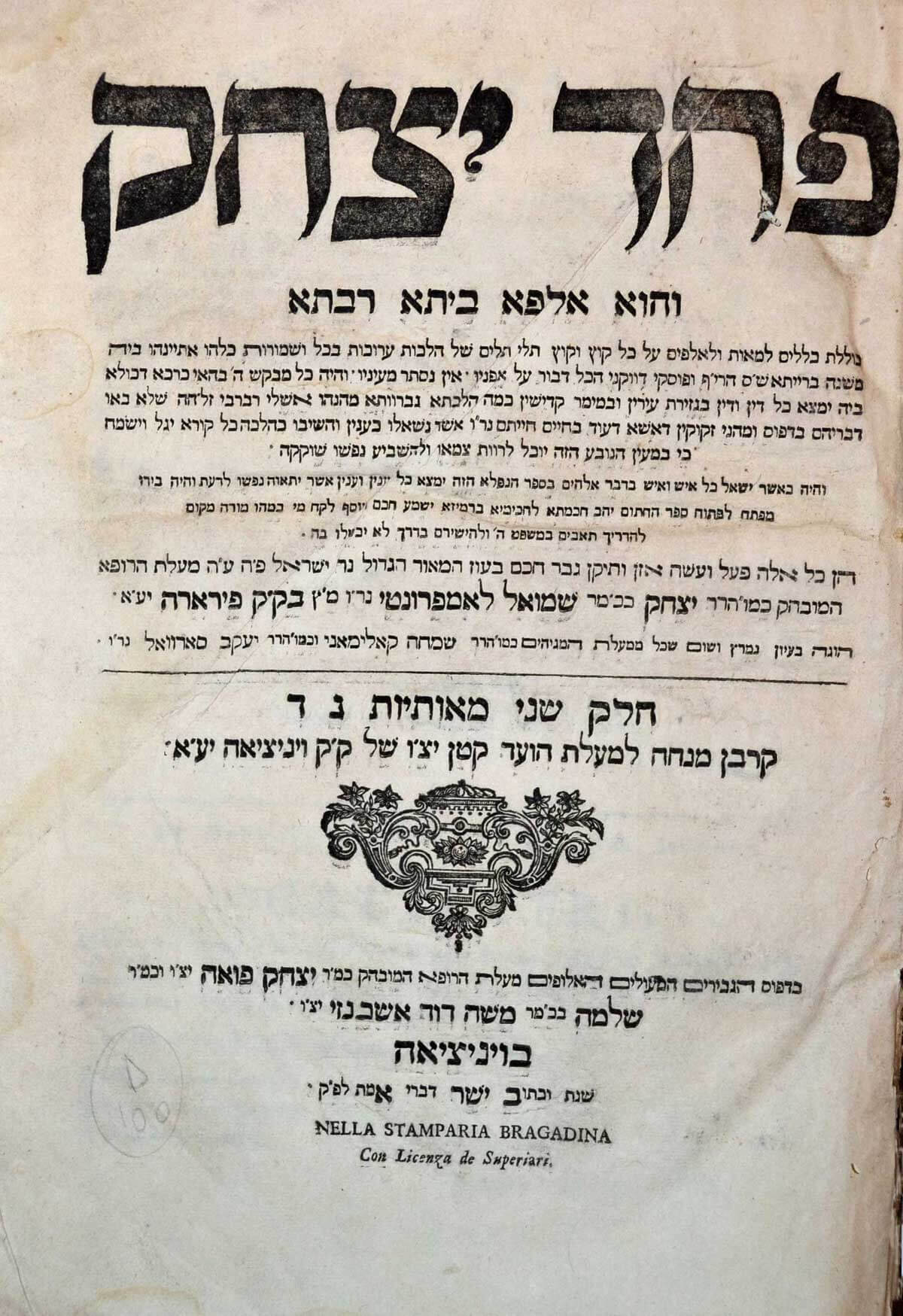
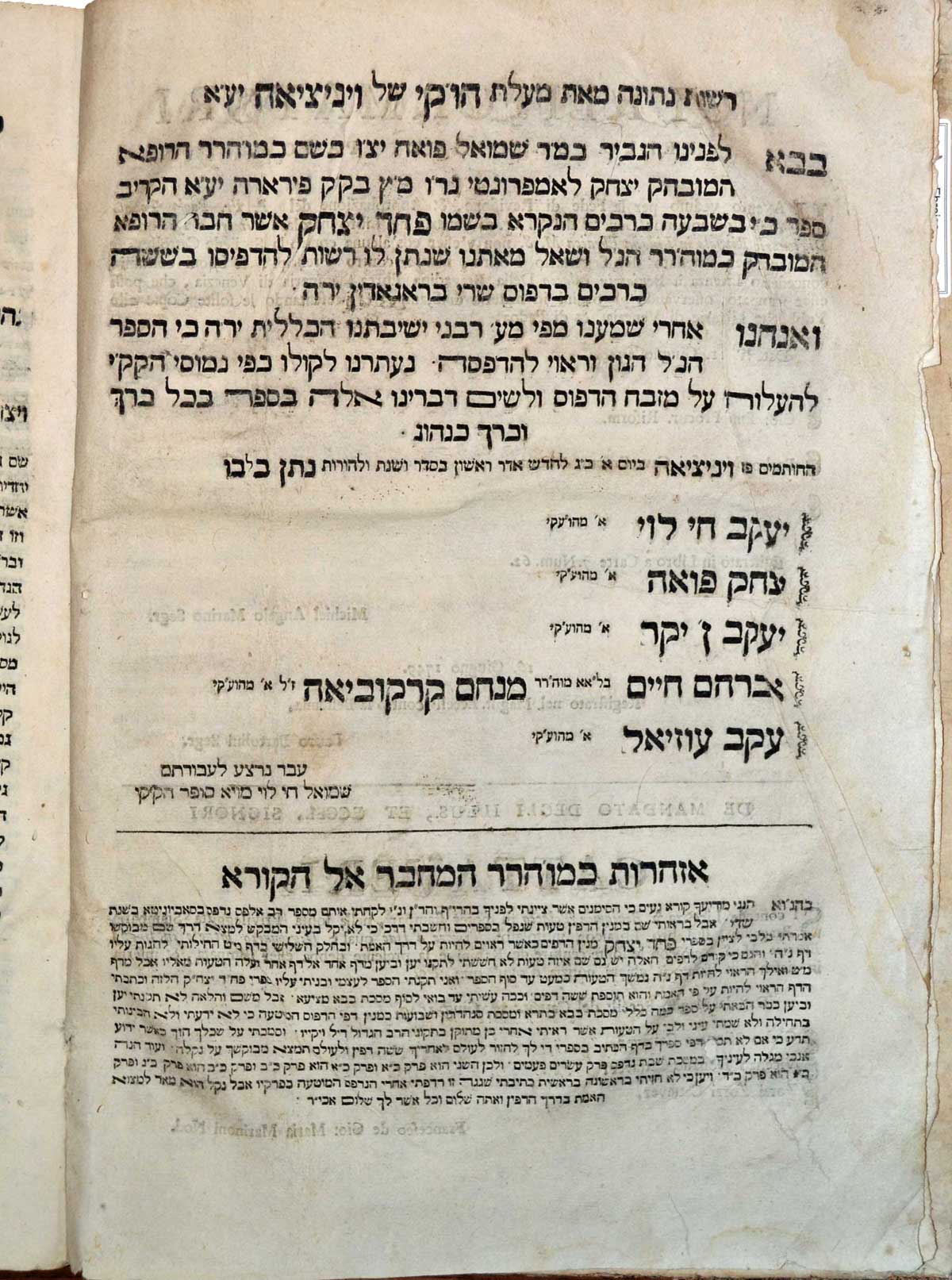
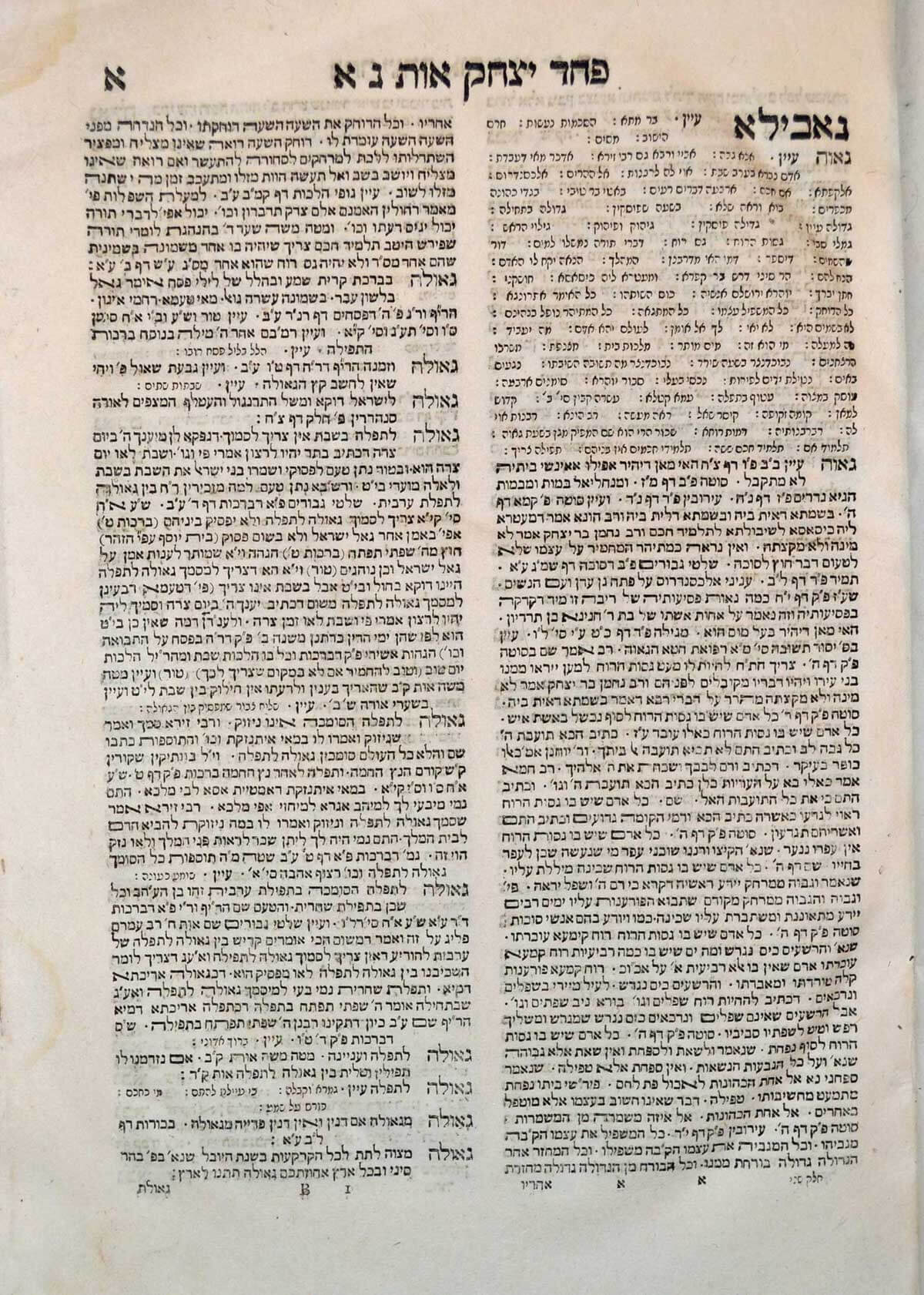
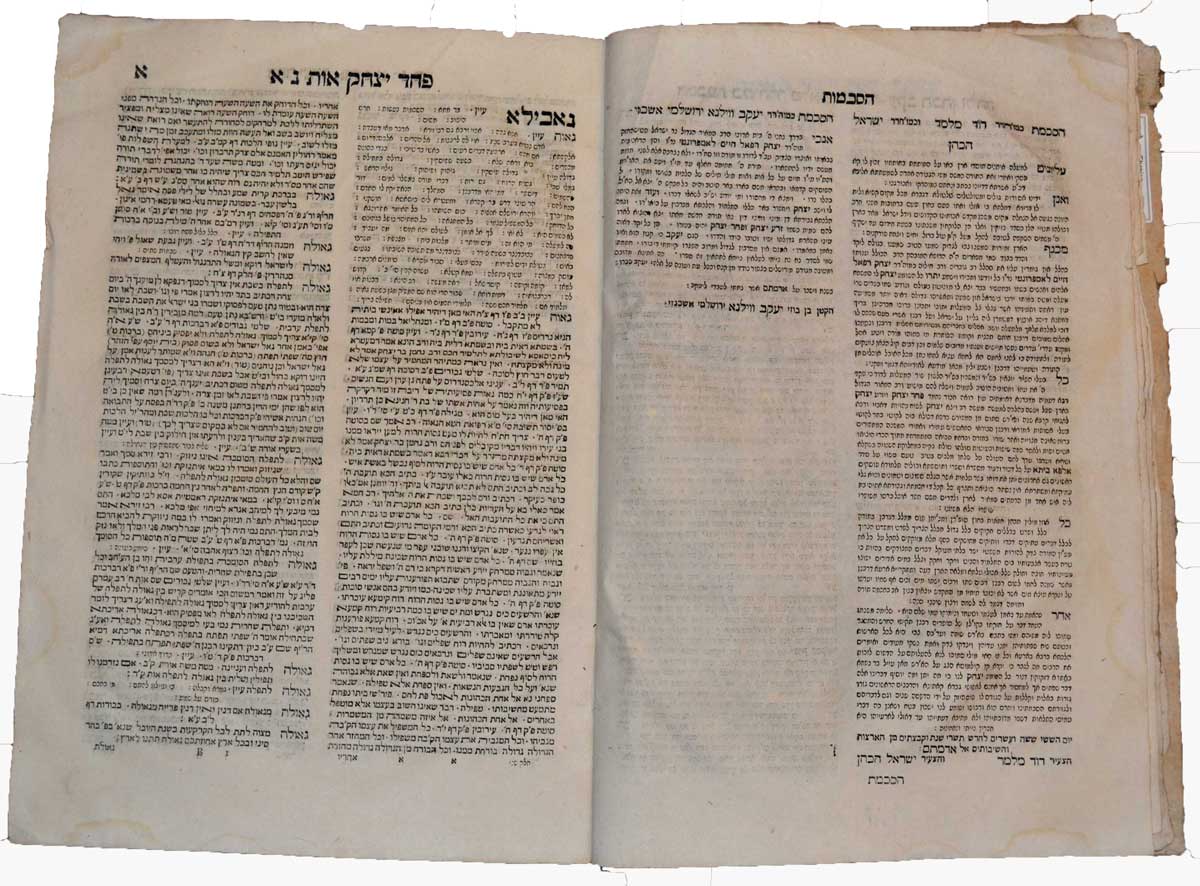
Yiṣḥaq Lampronti, Paḥaq Yiṣḥaq, Venice 1750, Renato Maestro Library


